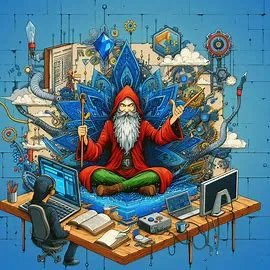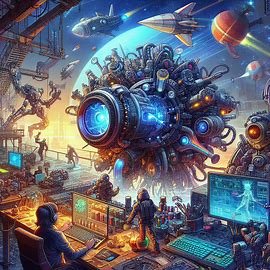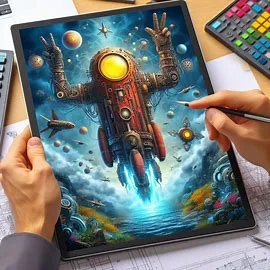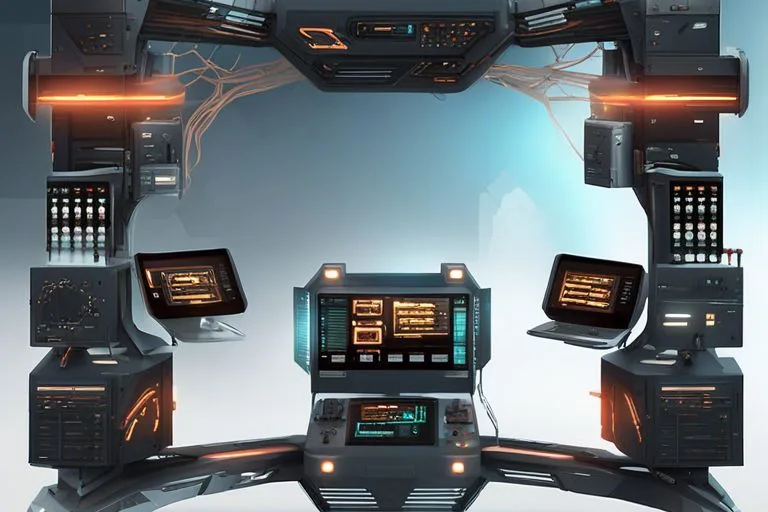Understanding Unit 70 Game Engines
Many game developers and enthusiasts are familiar with Unit 70 game engines, but not everyone fully grasps the intricacies of this powerful tool. In this comprehensive guide, we will take a deep explore the inner workings of Unit 70 game engines, exploring their capabilities, features, and potential pitfalls.
Whether you’re a seasoned developer looking to enhance your skills or a beginner eager to learn more about game development, this article will provide valuable insights into the world of Unit 70 game engines.
List of Unit 70 Game Engines
The Architecture of Unit 70 Game Engines
While game engines vary in complexity and design, Unit 70 engines follow a specific architecture that governs their operation. Understanding the architecture of Unit 70 engines is crucial for game developers looking to leverage its capabilities effectively.

Core Components and Their Interactions
Interactions between core components in Unit 70 engines form the backbone of the system’s functionality. These components, such as the input manager, scene manager, and physics engine, collaborate to bring the game world to life.
The input manager processes user commands, the scene manager organizes game objects, and the physics engine governs interactions between entities. Harmonizing these components is vital for a seamless gaming experience.
Moreover, these core components communicate through well-defined interfaces, enabling modularity and extensibility in Unit 70 engines. For instance, developers can swap out the default physics engine with a custom one without disrupting other systems. This flexibility empowers developers to tailor the engine to their specific needs.
Rendering Systems: Bringing Graphics to Life
Components within Unit 70 engines dedicated to rendering are responsible for transforming game data into visually appealing graphics. These systems manage shaders, lighting, and rendering techniques to showcase the game world in all its glory. The rendering pipeline in Unit 70 engines optimizes performance while delivering stunning visuals.
Graphics in Unit 70 engines can range from simple 2D sprites to complex 3D environments. The rendering systems leverage advanced algorithms and techniques to ensure that each frame is rendered efficiently. By balancing graphical fidelity and performance, Unit 70 engines provide an immersive gaming experience across various platforms.
Simulating Real-World Mechanics

Any game engine worth its salt relies heavily on a robust physics engine to simulate real-world mechanics within the game environment. One of the key components of a physics engine is the ability to accurately model physical interactions such as gravity, friction, and collision forces. This ensures that objects within the game world behave realistically and respond to external forces in a believable manner.
One of the challenges in simulating real-world mechanics lies in the need for calculations to be performed in real-time to maintain the smooth and responsive gameplay experience that modern gamers expect. Unit 70 game engines excel at handling these complex calculations efficiently, allowing for dynamic and interactive gameplay environments that keep players engaged.
Collision Detection and Response Techniques
Detection in the context of collision refers to the algorithms and techniques used by the physics engine to identify when two or more objects in the game world come into contact with each other.
The response phase involves determining how these objects interact after a collision, such as bouncing off each other or triggering specific game events.
Mechanics behind collision detection and response techniques are crucial for ensuring that gameplay remains smooth and realistic.
Unit 70 game engines leverage advanced algorithms and optimizations to handle complex collision scenarios efficiently, allowing for seamless interactions between game objects and enhancing the overall gaming experience.
Audio Processing in Unit 70
To explore into the audio processing capabilities of Unit 70, we need to understand how the sound engine works within this game engine.

Sound Engine: Creating an Immersive Experience
Engineered with a focus on creating an immersive audio experience, Unit 70’s sound engine is designed to deliver high-quality audio in real-time.
By incorporating advanced audio algorithms, this engine can provide dynamic sound effects that react to in-game events and player actions. This feature enhances the overall gaming experience by making the environment more realistic and engaging for the players.
Additionally, the sound engine in Unit 70 allows developers to implement various audio effects such as reverb, echo, and equalization to further enhance the audio output.
This level of customization enables game designers to create unique soundscapes that can transport players into the virtual world they have created.
Advanced Audio Features and Spatial Sound
Unit 70 goes above and beyond by offering advanced audio features such as spatial sound technology. This cutting-edge technology simulates the way sound behaves in the real world, allowing for a more realistic audio experience.
By accurately placing sound sources in a 3D space, developers can create a more immersive and interactive environment for players.
- Sound:
Realistic sound effects Enhanced audio customization Dynamic audio reactions Immersive soundscapes
The inclusion of spatial sound technology in Unit 70 opens up a world of possibilities for game developers to create more engaging and lifelike audio experiences. By harnessing the power of spatial audio, games can deliver a heightened sense of realism that draws players deeper into the gameplay.
- Audio:
Enhanced spatial sound technology Real-time dynamic sound effects Customizable audio effects Interactive 3D audio environments
Scripting and Gameplay Programming
Once again, we investigate into the intricate world of Unit 70 game engines to understand the imperative components that drive the gameplay experience. In this chapter, we will explore the crucial role of scripting and gameplay programming in shaping the final output of a game.
Understanding the Scripting Layer
Gameplay in Unit 70 game engines relies heavily on the scripting layer to control various aspects of the game environment. The scripting layer acts as a bridge between the game engine’s core functionalities and the game designers’ vision, allowing for flexibility and customization in gameplay elements.
By using scripts written in languages such as Lua or Python, developers can create intricate behaviors, interactions, and events within the game.
Gameplay programmers often work closely with game designers to implement and fine-tune scripts that dictate gameplay rules, AI behaviors, and event triggers.
This collaboration ensures that the game mechanics align with the intended player experience, providing a seamless and engaging gameplay flow.
Integrating Scripts with Game Mechanics
Gameplay is elevated when scripts seamlessly integrate with game mechanics to enhance player immersion and interactivity. Whether it involves controlling character movements, managing in-game assets, or triggering dynamic events, the integration of scripts plays a pivotal role in shaping the overall gameplay experience.
By linking scripts to specific game objects and actions, developers can create complex gameplay systems that respond dynamically to player input.
Game designers must carefully balance the use of scripts to avoid overwhelming players with too many dynamic elements or creating situations that lead to unintended consequences. Proper testing and iteration are imperative to ensure that the integration of scripts enhances gameplay without detracting from the overall game experience.
The Role of Artificial Intelligence in Unit 70

Keep up with the latest trends in game development, Unit 70 game engines incorporate advanced artificial intelligence (AI) systems to enhance the gaming experience.
AI plays a crucial role in creating realistic and challenging environments by controlling non-player characters (NPCs) and simulating human-like behaviors.
In Unit 70, AI algorithms are used to make decisions, react to player actions, and create dynamic gameplay scenarios.
Through AI, Unit 70 game engines enable NPCs to exhibit complex behaviors such as strategic planning, learning from past experiences, and adapting to changing game conditions.
These AI systems help enhance the overall immersion for players, creating a more engaging and interactive gaming experience.
Navigation Meshes and Pathfinding Algorithms
Pathfinding in Unit 70 game engines is powered by navigation meshes and advanced pathfinding algorithms. These tools allow NPCs and game characters to navigate through the game world intelligently, finding the best routes to reach their destinations efficiently.
Unit 70’s pathfinding algorithms use sophisticated methods such as A* search and Dijkstra’s algorithm to calculate the shortest and most efficient paths for NPCs.
By utilizing navigation meshes, which define walkable areas in the game world, the AI can make informed decisions on movement, avoiding obstacles and optimizing their path towards their goals.
Any game developer working with Unit 70 must have a solid understanding of navigation meshes and pathfinding algorithms to create immersive and challenging game environments. These tools are necessary for designing intelligent NPCs and creating dynamic gameplay scenarios that keep players engaged.
It is imperative to optimize the pathfinding algorithms in Unit 70 game engines to ensure smooth gameplay performance. Efficient pathfinding not only enhances the player experience but also contributes to the overall realism and immersion of the game world.
Optimization and Performance
Many game developers understand the importance of optimization and performance when creating games using Unit 70 Game Engines. Without proper optimization, games can suffer from lag, crashes, and overall poor user experience. It is crucial to implement strategies that maximize efficiency and ensure smooth gameplay.
Techniques for Maximizing Efficiency
Performance in game development can be enhanced through several techniques. One common approach is to reduce the number of draw calls and polygons in the game’s graphics.
This can be achieved by implementing LOD (Level of Detail) systems, where objects are rendered with different levels of detail based on their distance from the camera. Additionally, optimizing shader code and textures can also significantly improve performance.
Another key technique for maximizing efficiency is to implement occlusion culling, which prevents rendering objects that are not visible to the camera. By optimizing the rendering process in this way, developers can reduce the workload on the GPU and CPU, ultimately leading to a smoother gameplay experience.
Profiling Tools and Best Practices
Maximizing the performance of a game involves using profiling tools and following best practices to identify and address bottlenecks. Profiling tools such as Unity’s Profiler can help developers analyze the performance of their game and pinpoint areas that require optimization.
By examining CPU and GPU usage, draw calls, and memory usage, developers can make informed decisions on how to improve performance.
With profiling tools and best practices in place, developers can fine-tune their games for optimal performance. By identifying and addressing performance issues early in the development process, developers can ensure that their games deliver a seamless and immersive experience to players.
Community and Support Networks
After delving into the intricacies of Unit 70 game engines, it’s imperative to understand the robust ecosystem supporting its developers. The community surrounding Unit 70 is vibrant and active, with numerous online forums, social media groups, and Discord channels where developers can seek advice, share their work, and connect with like-minded individuals.
Community engagement plays a crucial role in the success of any game engine, as it fosters collaboration, feedback, and a sense of belonging among developers.
Support networks are also key components of the Unit 70 ecosystem. Unity Technologies, the company behind Unit 70, offers extensive documentation, tutorials, and customer support to assist developers in navigating the engine’s features and functionalities. Additionally, third-party websites, blogs, and YouTube channels dedicated to Unit 70 provide supplementary resources and insights for developers at all levels.
Extending Functionality Through Plugins and Asset Stores
Extending the functionality of Unit 70 is made possible through plugins and asset stores, which offer a plethora of tools, scripts, and assets to enhance developers’ projects.
Plugins can streamline workflows, add new features, and optimize performance within Unit 70 projects, saving developers time and effort.
These plugins are developed by both Unity Technologies and third-party developers, ensuring a wide range of options to suit various project needs.
The Asset Store is a treasure trove of ready-made assets, ranging from 3D models and textures to sound effects and scripts, allowing developers to accelerate their game development process. With a simple drag-and-drop interface, developers can easily integrate these assets into their projects, saving valuable time and resources.
Support: While the vast array of plugins and assets can greatly enhance development efficiency, developers must exercise caution in selecting and integrating third-party tools to ensure compatibility and reliability with the Unit 70 engine.
The Future of Unit 70 and Game Development
Unit 70 Game Engines have played a significant role in shaping the landscape of gaming over the years. As we look to the future of game development, it’s crucial to understand the emerging trends and technologies that are set to revolutionize the industry.
Emerging Trends and Technologies
Technologies such as virtual reality (VR), augmented reality (AR), and artificial intelligence (AI) are at the forefront of driving innovation in game development. With the increasing accessibility and affordability of VR and AR devices, game developers are exploring new ways to create immersive and interactive gaming experiences.
AI technologies are being utilized to enhance gameplay mechanics, create more realistic non-player characters, and improve overall game optimization and performance.
Virtual streaming, cloud gaming, and cross-platform integration are also emerging as key trends in the world of game development. These technologies allow for seamless gaming experiences across different devices and platforms, breaking down barriers and enabling players to enjoy their favorite games anytime, anywhere, and on any device.
Predictions for the Next Generation of Game Engines
Game developers predict that the next generation of game engines will place a greater emphasis on user-generated content, community-driven platforms, and real-time collaboration. These advancements will empower players to not only customize their gaming experiences but also to become actively involved in the development and evolution of games.
To stay ahead in the highly competitive gaming industry, game developers will need to embrace these upcoming trends and technologies, continually innovating and pushing the boundaries of what is possible in game development.
Final Words
Ultimately, exploring into the complexities of Unit 70 game engines provides a comprehensive look at the intricate processes involved in creating dynamic and engaging video game experiences.
From understanding how game objects and components interact to exploring the nuances of game engine architecture, this deep dive sheds light on the technical prowess required to develop cutting-edge games in the modern gaming industry.
By examining the core features and functionalities of Unit 70 game engines, developers and enthusiasts can gain a deeper appreciation for the meticulous craftsmanship that goes into designing immersive gaming environments.
Whether it’s optimizing game performance or implementing advanced physics systems, this exploration highlights the innovative capabilities of Unit 70 game engines and sets the stage for continuous advancements in game development technology.

